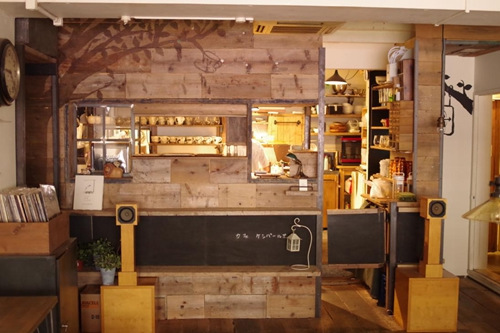Why Starbucks can't be found in Italy: 1.50 euros for local coffee
Why can't Starbucks, which is on fire in China, find a store in Italy?

Zhang Zhiwei
Recently, people who returned from a business trip to Italy said that they could not find a Starbucks coffee shop there. "not a single store can be found within 300 miles." A reporter from China Business Daily typed "Italy" into the store map on Starbucks' official website, which also showed that it did not exist.
"there are not only many but also authentic cafes in Italy, and the prices are much cheaper. Most of the locals spend 1.5 billion euros and drink at the bar and then leave." Kitty, who has just returned from a trip to Italy, told China Business Daily that the coffee shop behind Notre Dame Cathedral in Florence drinks 1.50 euros standing and 3 euros sitting.
This fully competitive market and coffee culture deter the global brand Starbucks.
The secret of store layout
So far, more than 21000 stores have been opened in 66 countries around the world, according to the latest data provided by SBUX.NASDAQ. However, Italy is not yet one of these 66 markets.
According to Kitty, most locals have a piece of bread, a cup of Espresso (espresso) and a little fruit every morning.
It is understood that at present, 1.5-2 euros per cup is still the price after the government raised taxes and passed on the economic crisis, and the prices were cheaper before. In spite of this, local tourist attractions and gold (1176.20,-0.40,-0.03%) areas have basically maintained this level, with some open-air cafes drinking at most 3 euros per cup.
"in theory, the Italian market should be good, regardless of per capita income or customs, romantic leisure." Zhu Danpeng, a researcher at the China Food Business Research Institute, believes that for a global brand, there are only several factors to consider in the process of global store expansion: national GDP, per capita income, population density, store rent and employee wages. There are also industry analysts said that in the face of Italian espresso, Starbucks coffee lacks a competitive advantage in technology, and the standardized corporate culture is incompatible with the local culture, such as standing or sitting.
A founder of a coffee company told reporters: "generally speaking, the consumers of espresso are heavy enthusiasts of the product, who participate in and enjoy coffee production and even drink it without sugar. Starbucks coffee, on the other hand, forms a variety of flavors by adding milk and vanilla, which is also aimed at mass consumers, most of whom have not yet formed awareness of the product." Therefore, even if Starbucks enters Italy, it is difficult for Starbucks to have a place in Italy, which has a strong coffee culture.
Why not enter Italy and how do you think about global store expansion? Starbucks China responded to China Business Daily that whether it is choosing a target market or a new city, the main consideration is "in entering new markets and store development." pay attention to listening to the voices and needs of customers.
As of the end of fiscal year 2014, Starbucks had 20955 stores worldwide, including 14191 in North America, 2140 in Europe and 4624 in China and Asia Pacific. In fiscal year 2014, Starbucks grew 6 per cent globally, 6 per cent in North America, 5 per cent in Europe and 7 per cent in China and the Asia-Pacific region.
According to Starbucks' global five-year plan at the end of 2014, the company plans to generate revenue of $30 billion in 2019, an increase of more than 100% from $16 billion in 2014, with an average compound annual growth rate of about 18%.
Previously released second-quarter 2015 results show that Starbucks China and the Asia-Pacific region will continue to be important markets in Starbucks' global expansion strategy.
China's market ambition
Starbucks opened its 1500 stores in China at the end of 2014, and the frequency of new stores has gradually accelerated since then. "an average of one new store was opened every day in fiscal year 2014, and the 2015 goal is to be more aggressive, opening a new store within 18 hours." Wang Jingying, president of Starbucks China, said at the beginning of the year.
At present, with more than 3 million customers a week, Starbucks is making great strides in China, and the number of Starbucks stores in China is expected to reach 3400 by 2019, double or even more than the current 1600. "in the next few years, we will further meet customers' demand for store convenience and diversification in first-and second-tier mature markets, and continue to expand to other emerging cities." Starbucks China said that the environmental layout of each store will be taken care of by a special "Chinese design team" and integrate more cultural and cultural elements of the local community.
According to the London International Coffee Organization, compared with the global average growth rate of 2%, China's coffee consumption is growing at an astonishing rate of 15% a year. According to statistics, the current coffee sales in China is about 70 billion yuan, while the scale of the world coffee market is 12 trillion yuan.
Zhu Danpeng believes that for world brands, emerging countries are the focus of their market expansion, because these markets have huge room for growth and generous returns. "if the number of stores reaches 3400 within five years, that means more than 10% of the total number of stores in the world. China will be an important growth point for Starbucks' future performance, both in terms of sales and profits."
However, in the Chinese market, Starbucks is also facing more fierce competition, especially COSTA, which was born in the same year as Starbucks but only entered the Chinese market in 2007, and Korean coffee representative-coffee to accompany you.
The reporter consulted the COSTA official website to learn that the total number of stores in the Chinese market has reached 218 at present. In the business model, it also adopts the chain mode of direct stores to expand. In 2006 and 2008, it cooperated with Yueda Group and Beijing Hualian Group, and quickly opened up stores in large shopping centers such as large supermarkets and department stores. After the combination of north and south channels, COSTA and Starbucks "hand-to-hand combat" in busy areas, and once announced that they would win China's 1Comp3 coffee market in 2018.
Coffee accompany you as the representative of Korean Coffee Shop, since its establishment in 2008, there have been more than 900 stores in Korea, and the Chinese headquarters was established in Chongqing in 2011. At present, there are more than 600 stores in China, which created a miracle in the Chinese market at that time.
Pang Enshuai, a consultant at Beijing Dizhicheng Enterprise Management Consulting Co., Ltd., said that the contemporary coffee culture created by Starbucks, COSTA and other European and American coffee brands is mainly aimed at office workers and company white-collar workers; Korean coffee brands mainly attract young and fashionable consumers by creating a leisure and entertainment consumption environment. In addition, there are more consumers who have not been discovered.
"compared with a decade ago, domestic consumers' awareness of coffee is increasing now, and with the emergence of more and more cafes, there will be 'two changes' in the future: specialization and diversification." The above industry insiders said that the selection of coffee beans and the unique baking process will meet consumers' higher requirements for taste, at the same time, coffee shops will also launch some new products in the future to enrich the product structure.
It is reported that Starbucks will bring its tea brand Teavana to its stores in China and the Asia-Pacific region in 2016. At the end of October 2013, Starbucks opened its first Teavana teahouse in Manhattan, New York, serving desserts and other foods, including flat bread, salads and small plates of snacks, at prices ranging from $3 to $15.
Important Notice :
前街咖啡 FrontStreet Coffee has moved to new addredd:
FrontStreet Coffee Address: 315,Donghua East Road,GuangZhou
Tel:020 38364473
- Prev

Japan popular "silent cafe" away from the noise healing soul
The picture shows the interior of a quiet cafe in Japan. BEIJING, June 23 According to Japanese media reports, recently, a silent cafe that prohibits conversation in principle has become popular among young Japanese. Enjoy the relaxing time of reading and drinking tea in a quiet environment, which becomes the reason why people flock to it. Some people say that this completely quiet cafe can bring people away from everyday life.
- Next

BL Cafe opened in Ikebukuro Ward, Japan to satisfy the rotten girl
BoysLove(BL/mei) is a Japanese literary genre, usually presented as manga or anime, depicting a romantic relationship between one man and another. These gay stories are usually written by women for gay women who want to see beautiful men making out together. Just like the maid coffee shop built for otaku in Akihabara, fictional fantasy seeps into real life only to
Related
- What is the standard process for the purpose of coffee cup testing? What is the difference between hand-brewed coffee and cup testing?
- How to use hand-brewed coffee paragon small golden balls? How does cold coffee lock in the aroma of coffee?
- Is American coffee black? What is the difference between American coffee and drip coffee?
- Unexpected! Well-known tea beverage brand Lele Tea will withdraw from the Zhengzhou market!
- Starbucks enters the fashion and beauty industry?! Netizen: Give me an ice American eye cream
- Why can American refills for free? The difference between Americano and American drip pot coffee
- Being chased out of the rain in front of Starbucks?! Store: Sheltering from rain under umbrellas poses a safety hazard
- The white moonlight has changed?! Lucky launches "Big Winter Pear American"
- Hand-brewed coffee three-stage method, high-sweet and universal brewing method to share! What does the high sweet water level of hand-brewed coffee mean?
- What is the difference between raw, refined and full espresso coffee? How to extract espresso and taste good?

